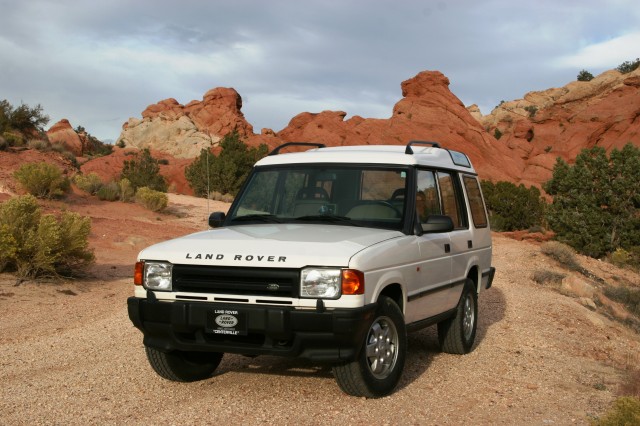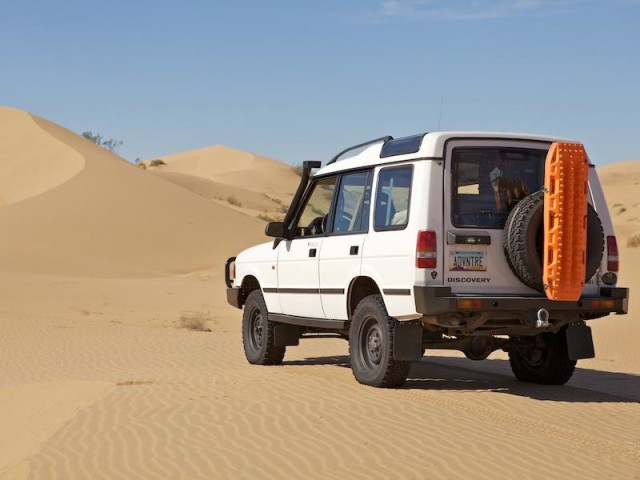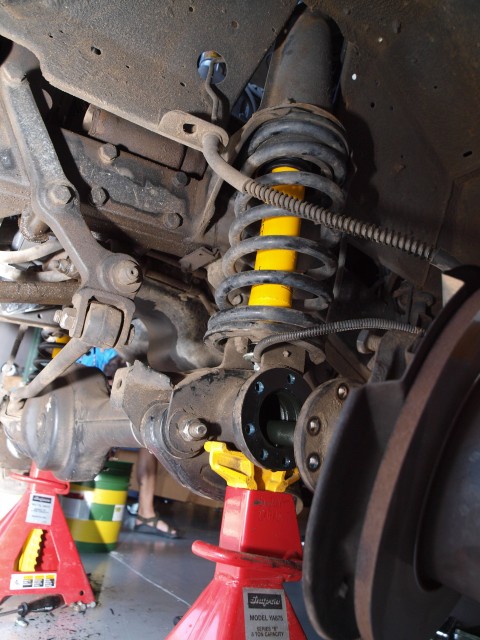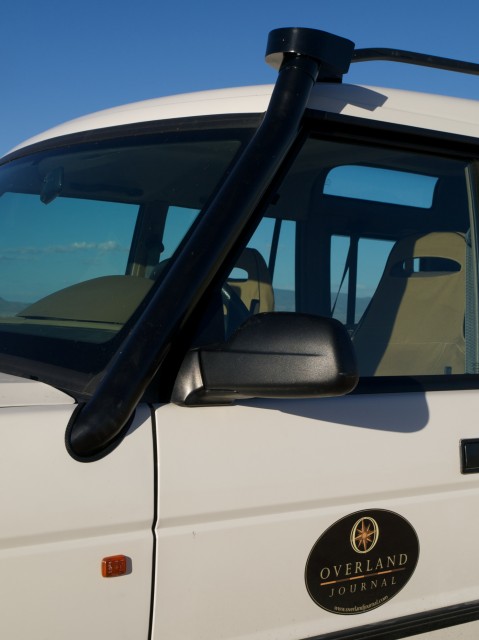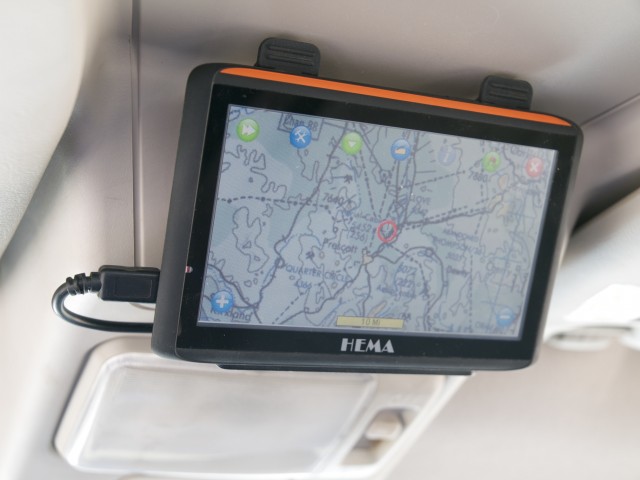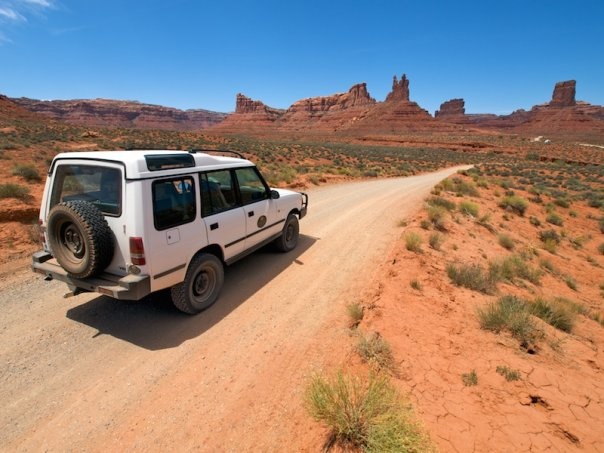For those of you who remember its introduction over three years ago, the Discovery project is as much about my personal appreciation of the model as it is about serious exploration. So, why do I love this 15-year-old car so much? I will try to keep my adorations limited, update you on recent changes, and also share the issues I have encountered over 40-plus months and 18,000 miles.
The Discovery really is the last of a breed, at least for Land Rover. The LR3 and LR4 are actually better performers in nearly every environment I have tested them, but that requires a heavy emphasis on electronics and complex systems, something we know that Land Rover has never been particularly exceptional at. But what Land Rover is exceptional at is producing a vehicle that engages and rewards the driver. Even as a 1995, my Discovery has ABS, airbags, fuel injection, dual-zone climate control, and a smooth accelerating V8. But what is more important (and absent from newer models) is a manual transmission, manual/cloth seats and robust, solid axles. There are no sunroofs to leak and no chassis computers and suspension airbags to fail. I believe this model represents the pinnacle of what Land Rover brought to the U.S., at least for the adventure traveler. It is easy to drive, quiet and comfortable, yet still provides excellent payload and technical terrain performance.
In reality, problems with the Discovery have been few, with all of the power window roller guides failing (plastic). I replaced them with aluminum ones from Falconworks in Tucson—problem solved. I also experienced a complete failure of the fuel pump while out testing recovery gear in Flagstaff. I now carry a spare. And thanks to the advice from other Discovery owners, I now have a complete spares kit and a renewed confidence in the Disco.
The last major modification to the Discovery was the installation of dual ARB air locking differentials and 3.9:1 ring and pinions. To source the lockers, gears and assembly, I turned to Great Basin Rovers in Salt Lake City. They have considerable experience with these differentials and a good reputation. This showed on arrival with the third members being delivered in HD five-gallon plastic buckets, completely padded and reinforced. The rear third member also included a bronze ring guide, which rides lightly against the ring gear and helps reduce deflection of the differential under shock loads, which can cause gear failure. The change from 3.54:1 to 3.9:1 is subtle numerically, but is noticeable on takeoff and when climbing in fourth and fifth gear. It appears to be the right complement to the slightly larger tires and added weight, while still allowing for comfortable cruising on the highway. For the installation, we tried out Adventure Trailers’ new vehicle modification services, and they did a top-notch job.
While the third members where being replaced, Adventure Trailers also changed out several seals and upgraded the brake lines to longer ones from Expedition Exchange. New brake pads were installed and the brake fluid was changed out. As part of the third-member swap, I had also specified a change from the rotoflex rear driveshaft and again turned to Tom Wood for another of his excellent driveshafts.
The last few modifications were limited, and were intended to complement the understated nature of the project. This included installing a Mantec snorkel, which is the same as those originally fitted to the Camel Trophy Discoveries and thousands of UN vehicles in service around the globe. The advantage of the Mantec snorkel is in the all-metal construction and the way the snorkel is installed, which keeps the air tube mostly within the front fender, as opposed to mounted to the outside of the fender and subject to impact and snagging on branches, etc.
I also elected to swap out the original Old Man Emu shocks for the new Sport version. The valving is noticeably stiffer, and is best suited to a vehicle with a full-time load or where more “sporty” handling is desired. With the weight of my Discovery, and with the swaybars removed, these shocks are almost perfect and greatly reduced pitch and sway from the short wheelbase.
For navigation, I installed the HEMA navigator in the overhead console. With the large screen and availability of both Memory Map and Ozi Explorer, I doubt any other navigation tools will be needed.
Along the way, we found a few items that exceeded our expectations, and few that we changed out. A few months ago, we swapped out the SandStorm seatcovers for the new Escape Gear units from Equipt. They are notably thicker and have a better overall construction. With a nod to vanity, they also have a better color for the interior. For the drawer system, I wish I had specified the lower drawers at two inches taller and the upper drawer at three inches shorter. That would allow taller cups and cooking equipment (and tools) down below and less wasted space in the large compartment. Overall, the drawers have been flawless, despite being the first set ever constructed by Adventure Trailers.
With these modifications, the Discovery project is essentially finished. To add any more would most likely ruin the balance (for my needs) and understated charm the Discovery currently has. I use it nearly every day, from tasks as domestic as transporting my mountain bike to the nearest trail and serving as my driver to the office, or more exciting adventures like trips to Southern Utah and Mexico. I am planning a solo overland trip into the Sierra Pinacate of northern Mexico to enjoy the results of this long-term project and use the Discovery as it was intended. This project has proven one point: Drive what you love.
This feature first appeared in the Fall 2010 issue of Overland Journal.



